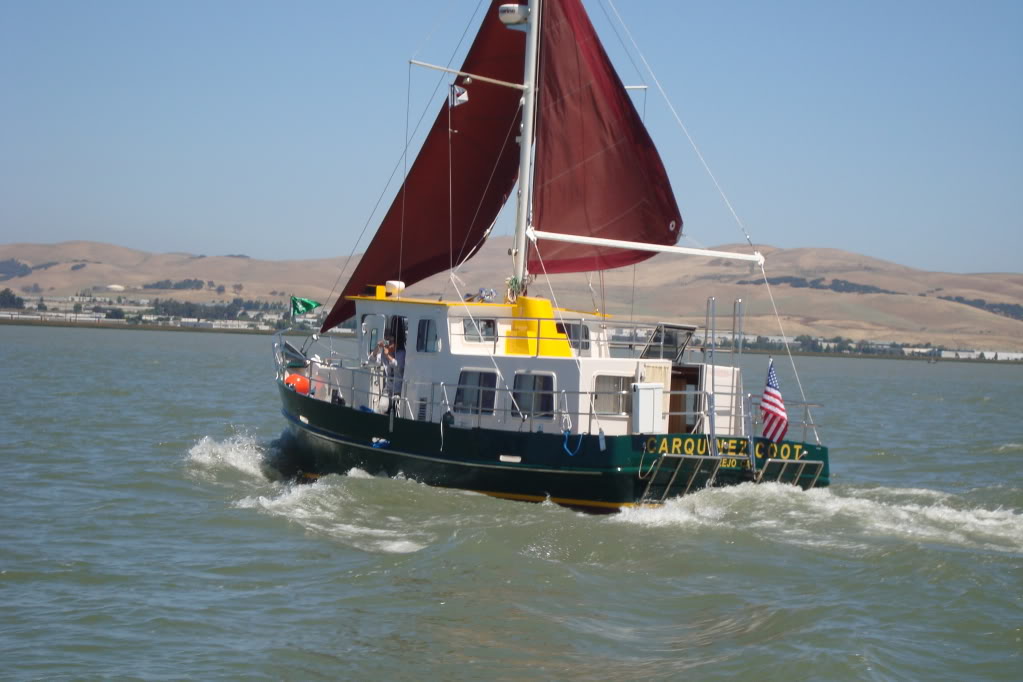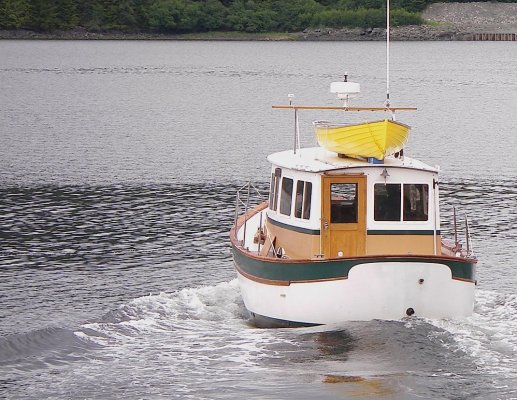>I agree. But why is that different from an M2 running 24x7 at 65% load factor? To get a 65% load factor on an M2, you need to drop the RPMs to 1850. Shouldn't it be 2100 just like M1?<
To change the LOAD the usual method is to select a load , gen head , water pump size or Propeller that fits the desired load at the desired RPM..
Its not just throttle position.
Thats why matching the engine loading , RPM , cruise speed and prop is more work than simply propping like a ski boat for full RPM at full throttle.
A 2100RPM engine would usually be run at 80% load at 90% of Rated Rpm.
The compromise of 1800 for cruise at 80% power (for 1800RPM) will usually result in very long engine life with high efficiency.
Low RPM operation is sometimes limited by the eng mfg , some fall off the chart at 1500 , so that would be the designed LR cruise, with the chart HP available at 1500 as the guide for loading.
Contemplating this concept shows how so many boats have far bigger engines than required , and mostly get by quite well as the HP rating is auto, tractor , or yard implement , flash peak BS,, not industrial.




